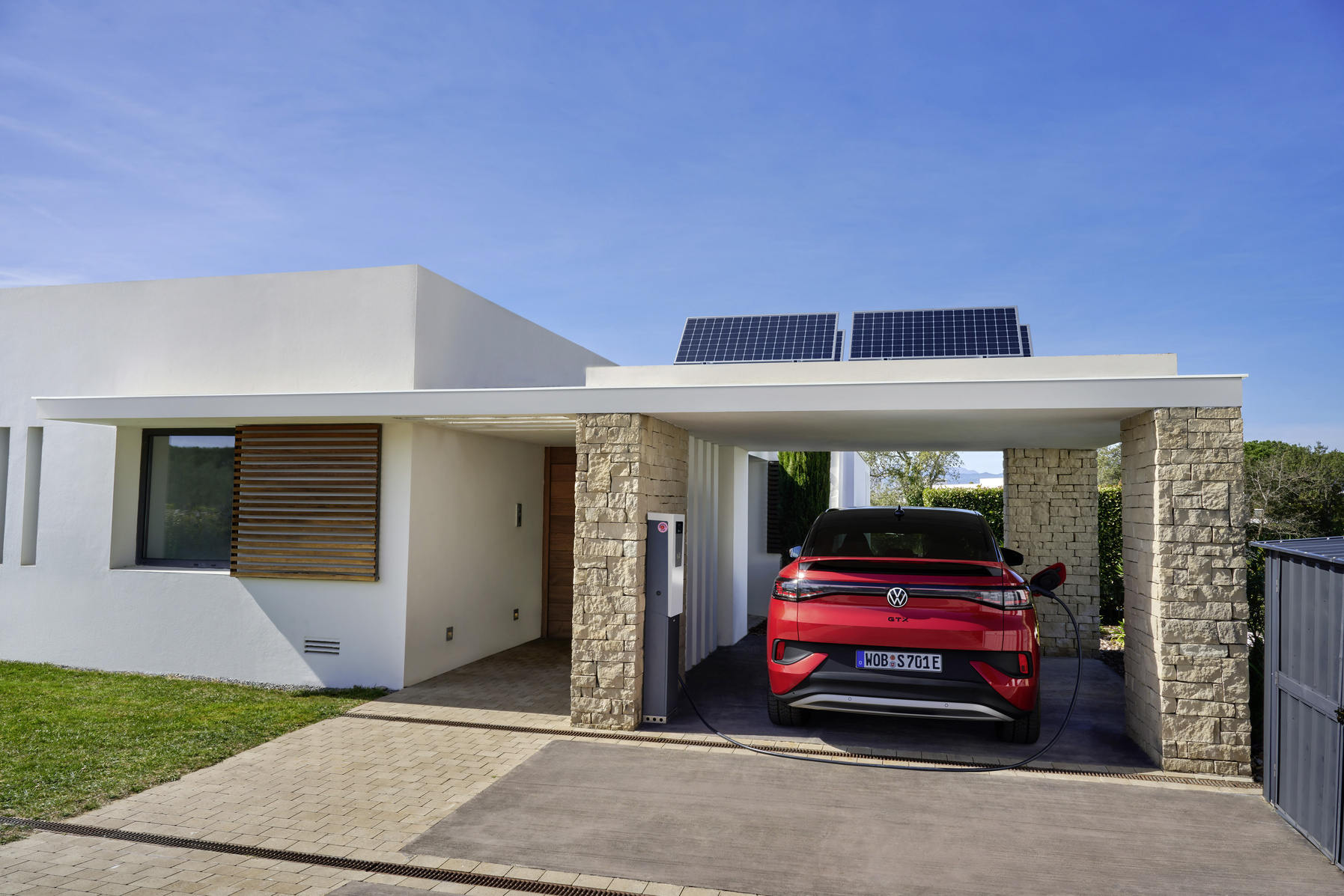Sign up for daily news updates from CleanTechnica on email. Or follow us on Google News!
Way back when the Volkswagen ID.3 was first shown, Volkswagen execs also highlighted eventual bidirectional charging. Now, we’re getting there, with a bidirectional charging initiative for ID. models just starting in Sweden.

In particular, this is a vehicle-to-home system that has been created to complement home solar PV power. First of all, the EV driver needs to have a Volkswagen ID. model with a 77 kWh (net) battery. Secondly, they need to get a home solar power system and associated Home Energy Management System (HEMS) from HagerEnergy GmbH. Thirdly, their vehicle software system needs to be at ID. Software 3.5 or higher. Then, at that point, the ID. owner can send electricity from their car battery back into their home as needed. So, yes, this is a vehicle-to-home (V2H) setup for now, not a broader vehicle-to-grid (V2G) system (yet).
Oh yeah, also, it seems this is just open to residents of the Stenberg housing estate in Hudiksvall, Sweden, for the time being. But hopefully it won’t take long to extend the option to others in Sweden, others in Europe, etc.


“The bidirectional charging function in the ID. models in combination with the DC charging technology is a dynamic extension of the home storage system. This takes over the main energy supply for the house. The vehicle is activated by the home power station when the home storage system requires additional energy. As soon as the home storage system is recharged, the vehicle stops transferring energy and goes into standby mode. This means that the ID. is only activated when additional energy is required.”
Volkswagen estimates that, with average daily energy consumption of 30 kWh, the V2H energy backup system can provide electricity to one’s home for about two days. There’s a limit built into the system that stops any V2H electricity transfer once the EV’s battery is down to 20%. Of course, if you don’t want to use your car’s battery some days because you need a full or high charge, you don’t have to.


“Thanks to the high storage capacity, a house can also be supplied with solar power over several cloudy days or in the evening when the sun has set and the photovoltaic system is no longer supplying electricity. This means that customers can decide for themselves when they want to draw energy from the public grid or use the self-generated electricity stored in the vehicle battery,” Volkswagen writes.
“In addition, with clever electricity tariffs and algorithms, it is already possible today to charge the car precisely when there is a lot of renewable energy available. For example, wind turbines do not have to be switched off because there are no consumers. The electric cars can feed electricity that they do not need into the customer’s home grid (vehicle-to-home) and in future also provide power to stabilise the electricity grid.”

This is clearly a very limited application of bidirectional charging, but it’s one of the first CCS-based bidirectional charging projects in the world. With this project underway, I expect we will see more opportunities with other partners popping up across Europe in the next couple of years.
Have a tip for CleanTechnica? Want to advertise? Want to suggest a guest for our CleanTech Talk podcast? Contact us here.
Our Latest EVObsession Video
https://www.youtube.com/watch?v=videoseries
I don’t like paywalls. You don’t like paywalls. Who likes paywalls? Here at CleanTechnica, we implemented a limited paywall for a while, but it always felt wrong — and it was always tough to decide what we should put behind there. In theory, your most exclusive and best content goes behind a paywall. But then fewer people read it!! So, we’ve decided to completely nix paywalls here at CleanTechnica. But…
Thank you!
CleanTechnica uses affiliate links. See our policy here.

